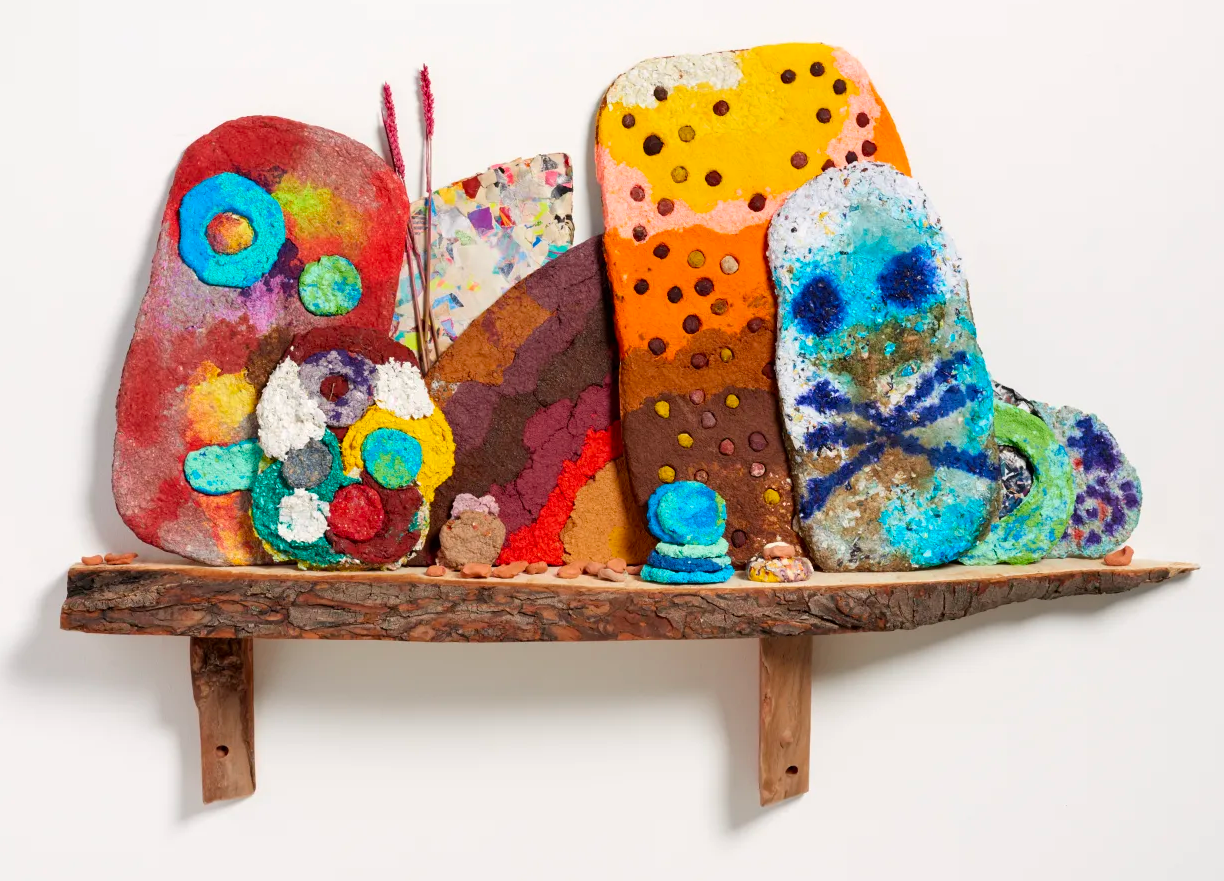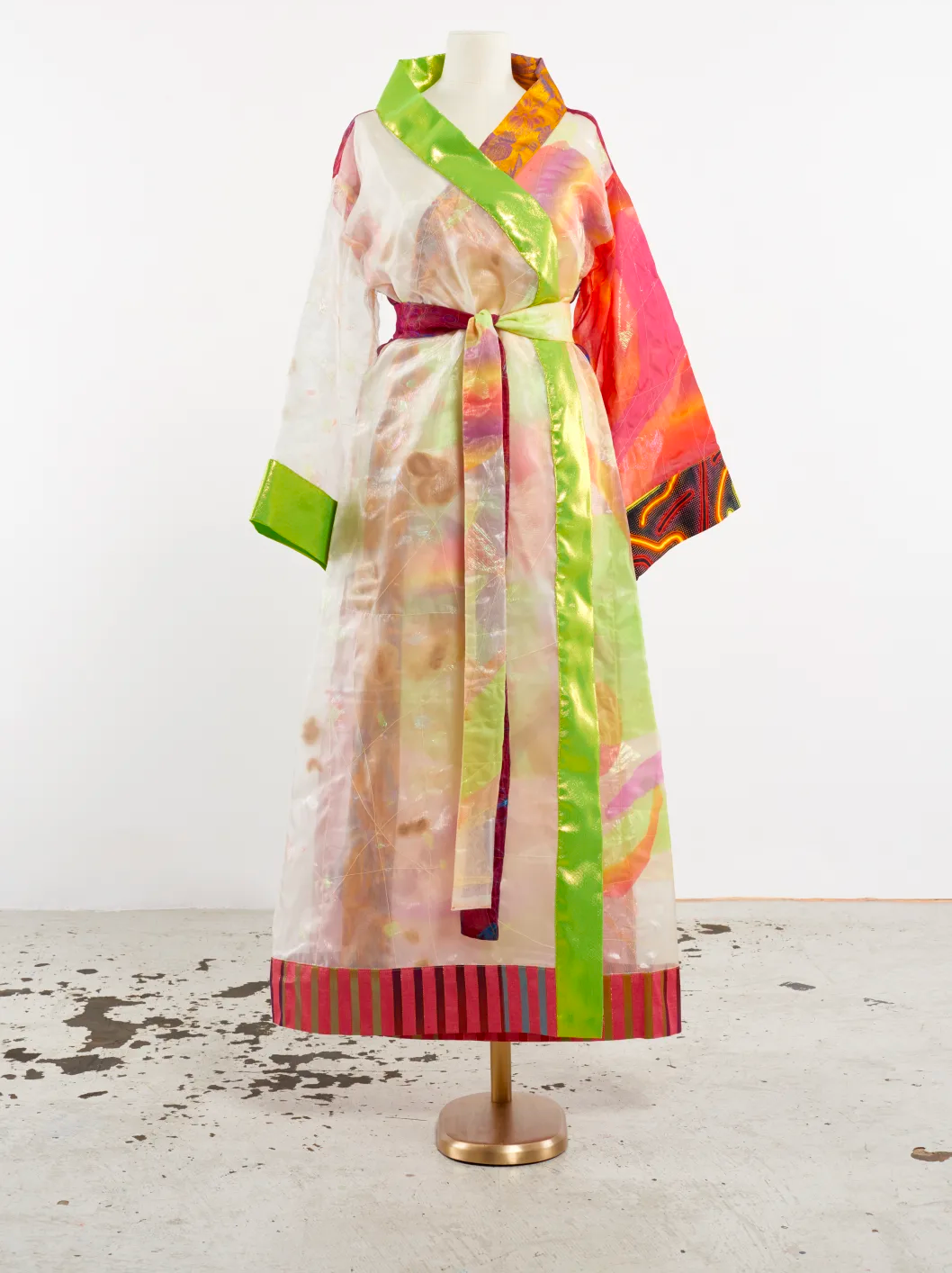It is difficult not to be taken with Ludovica Gioscia’s exhibition “Arturo And The Vertical Sea.” Upon entry, viewers confront three free-standing wooden structures akin to unfinished walls that criss-cross two gallery spaces at different angles, dividing them into discrete areas. Some of her double-sided works are draped over the wooden supports while others hang from or on them. A few handmade bark shelves span sections of the faux walls and contain collections of small works made of paper-mâché and ceramics. The Arturo of the show’s title is actually Gioscia’s cat who she sees as a collaborator. In an interview with the gallery director, Gioscia talks about the collaboration (consciously for her, unconsciously for the cat), her desire to connect to her cat’s dream world, the soothing impact of the cat’s meowing and purring on her psyche and the inclusion of cat hair as one of many disparate materials.
Cat imagery appears in the small watercolor Arturo and the Vertical Sea (all works 2020), a charming child-like rendering of undulating blue and green waves filled with disembodied cat heads and personified images of full-bodied cats, as well as in collections that include cat-shaped heads like Making Kin and Arturo.
However, the majority of works are comprised of colorful floral patterns and geometric abstractions. Small sketches for Gioscia’s Dream Robes and Portals are pinned to the supports, often in close proximity to the much larger finished pieces they envisioned. The Dream Robes are wearable textile artworks that function as magical tools. As Gioscia states, “I see the Dream Robes as catalysts that help me imagine artworks in my dreams, which I then re-create at [the] studio.”

Ludovica Gioscia, Making Kin (2020). Courtesy Baert Gallery.
Dream Robe 2 is a transparent Kimono-shaped garment draped within the open-framed walls covered with hand-sewn fabrics, in pink, orange and green tones, adorned with cut-out geometric shapes and crisscrossing threads. Similar textures appear in Portal 22, a quasi-transparent plastic window bordered by scallop-shaped, screen-printed fabrics.
Although the exhibition is filled with myriad backstories, it is not necessary to know them in order to be seduced by the installation. The works are precisely arranged and presented as individual objects, as well as in groups. For example, the ceramic and twine pieces that make up Earth Couture are mounted to a large irregularly-shaped wooden disk. The different pieces work in concert with each other to become a conversation that unfolds as viewers traverse from the front to the back sides of the works and come into contact with surprises along the way.
Gioscia draws from fashion, theory and the natural world to create these intriguing ensembles. Though derived from personal and emotional relationships, like her bond with Arturo, her installations are also formal investigations into the rubrics of daily life.


